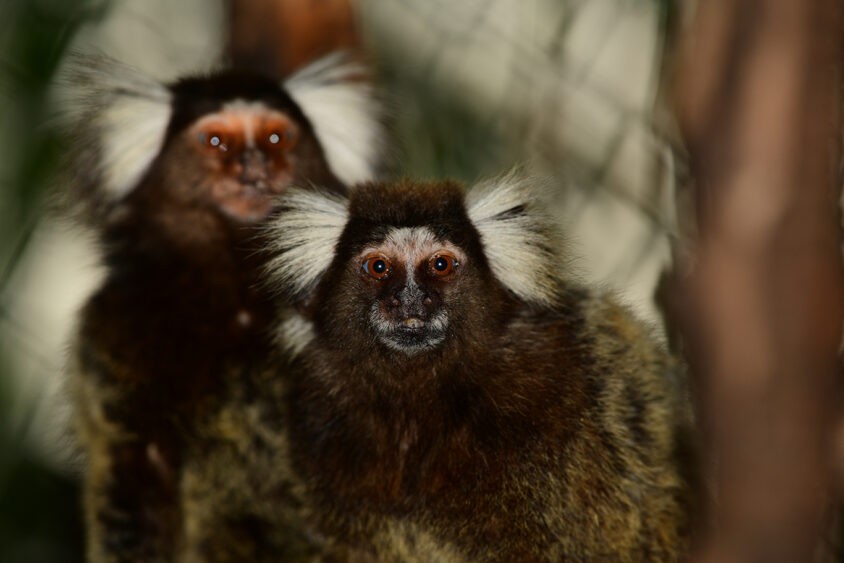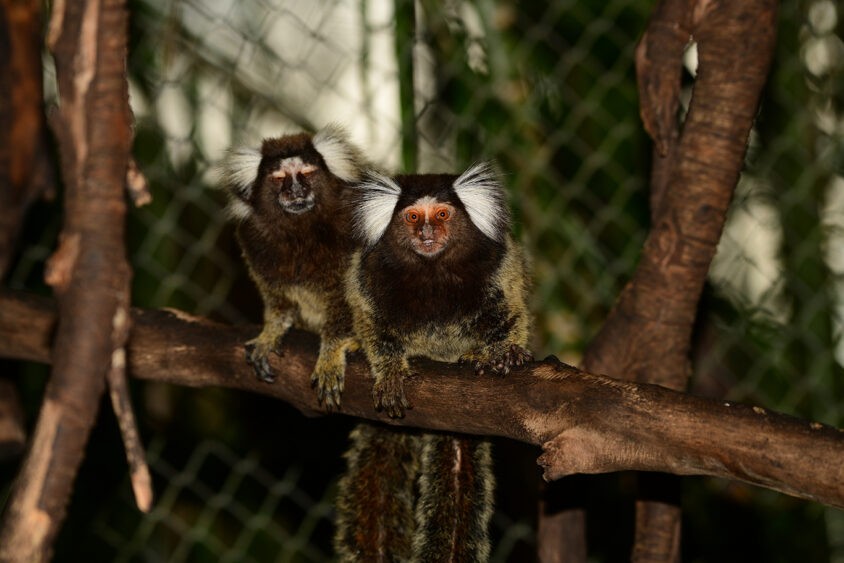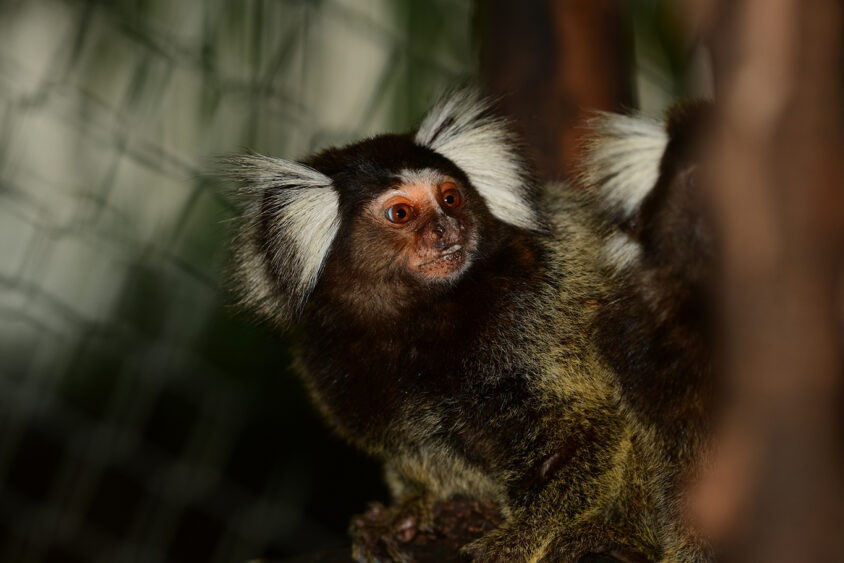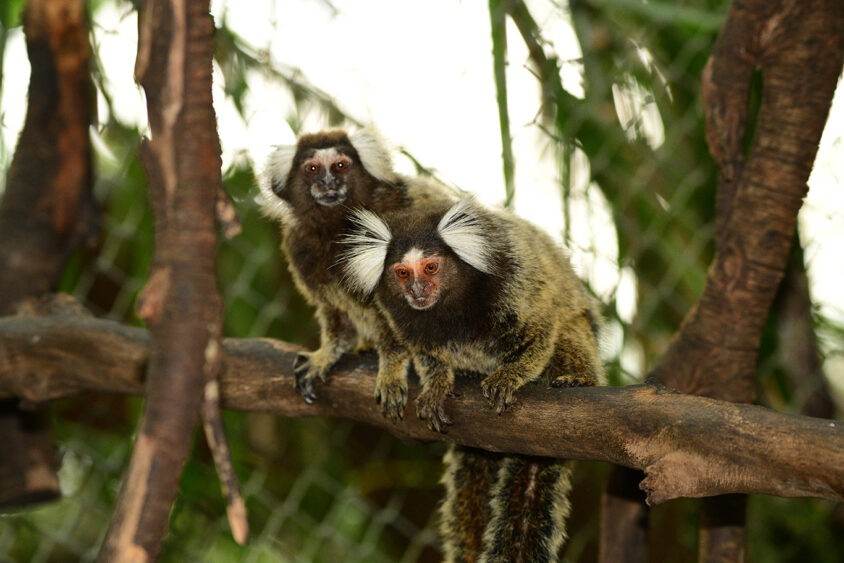Calitrix Jacchus at Natuwa: Discovering the Fascinating Marmoset Monkeys
An Important Transition: The Journey of the Marmosets to Natuwa
Not all journeys are physical. Sometimes, the most significant journeys are those made in life-changing circumstances. This was especially true for a group of marmoset monkeys who were brought to the Natuwa Wildlife Sanctuary at a crucial stage in their existence years ago.
Originally, these fascinating animals were introduced to Costa Rica by a dedicated German researcher. This scientist had devoted a significant part of their life to observing and studying marmosets, hoping to learn more about their behavior, diet, and relationship with the environment. However, as is the case with all lives, there came a time when the researcher began to age and realized they could no longer provide the level of care these animals required. Faced with this inevitable reality, a decision was made: it was time for the marmosets to embark on a new journey.
The arrival of the marmosets at Natuwa in 2008 was not simply a change of scenery. It marked a transition that shifted their purpose in life: they would no longer be mere subjects of scientific study but would now be part of a greater effort for wildlife conservation and public education.
Despite the challenges this change entailed, the transition to Natuwa offered the marmosets a unique opportunity. In their new home, these animals could experience a supportive and enriching environment, provided by a team of dedicated professionals who deeply care about their well-being. Thus, what began as a necessity transformed into a valuable opportunity for these marmoset monkeys, allowing them to live a fulfilling and meaningful life at the Natuwa Wildlife Sanctuary.
It is important to clarify that as a species that does not naturally inhabit Costa Rica, they must remain in captivity to avoid ecological imbalances in the local wildlife.

Furry Personalities: Getting to Know the Marmoset Monkeys
In the world of primates, marmoset monkeys, or Calitrix jacchus, hold a special place. Their small size, expressive faces, and remarkable social behavior distinguish them from other members of their order. Although they are now thriving at the Natuwa sanctuary, marmosets have a fascinating natural history that originates in a very different environment.
Originally, marmoset monkeys are native to the forests of South America, particularly Brazil. There, these small yet dynamic animals adapt to life in the jungle, skillfully climbing trees and establishing territories in the treetops. With a body length ranging from 14 to 19 centimeters and a tail of up to 35 centimeters, they are agile and compact creatures, perfectly suited for life in the heights. Their fur can be grayish or blackish, speckled with different shades and distinctive white markings on their ears.
Their social structures are matriarchal, with a female leading the group and being the only one to reproduce. They live in groups of up to 15 individuals, often extended families, with breeding pairs and their offspring sharing territory and resources. Cooperation is essential for the group’s survival and can be observed in how they share responsibilities, such as feeding and caring for the young.
In terms of diet, marmosets are omnivorous. Their natural diet consists of fruits, flowers, nectar, insects, and occasionally small vertebrates. They have lower teeth in the form of a comb that they use to puncture tree bark and extract sap and gum, making them important agents for seed dispersal and pollination in their ecosystem.
Marmosets’ reproduction is also remarkable. Females often give birth to twins, which is quite rare among primates.
The entire group is involved in caring for the young, with males and older siblings contributing to their upbringing.
These traits, along with their innate curiosity and distinctive personalities, make marmosets a fascinating species. By observing these animals at Natuwa, visitors can gain insight into their life in the wild and better understand the importance of conserving their original habitat.
Special Care: A Marmoset’s Daily Life at Natuwa
Ensuring the well-being of marmoset monkeys at Natuwa is a task that requires dedication, skill, and a deep understanding of their specific needs. The Natuwa team, composed of highly trained biologists and veterinarians, works tirelessly to ensure that each marmoset receives the best possible care.
The marmosets’ diet at Natuwa is carefully controlled and optimized to meet their nutritional needs. Twice a day, Dr. Andrea Brenez, our nutritionist, prepares meals that are rich in proteins and energy to keep the marmosets healthy and active. In addition, our veterinarians and interns regularly provide essential vitamins and minerals to the marmosets. Using an ingenious method involving syringes, the marmosets receive these vital doses, thinking they are being gifted with delicious treats.
Attention to the marmosets goes beyond feeding. Our team of professionals conducts regular check-ups to ensure that the animals are healthy and thriving in their environment. Veterinarians and biologists, under constant supervision, perform fecal sample analyses to detect the presence of parasites. Ethograms, or behavior charts, are used to monitor the behavior of the troop, providing a comprehensive insight into the animals’ physical and mental health.
Caring for the marmoset monkeys at Natuwa is a labor of love that goes beyond the ordinary. It requires a blend of specialized knowledge, patience, and commitment. But in the end, the reward is immense: the opportunity to contribute to the lives of these fascinating creatures and learn from them every day.
Enrichment and Behavior: Marmosets’ Favorite Activities
Life at Natuwa is far from boring for a marmoset monkey. The monkeys enjoy a variety of activities that keep them active and engaged. From climbing complex sets of ropes and branches to searching for hidden treats in enrichment toys, marmosets have plenty of opportunities to exercise their bodies and minds. These activities are not only fun for the monkeys but also mimic the challenges they would encounter in their natural environment, helping them maintain their natural abilities and live fulfilling and satisfying lives.
A Star Among Visitors: The Popularity of Marmosets at Natuwa
Marmoset monkeys are undoubtedly one of the main attractions for visitors to Natuwa. With their exotic appearance and lively behavior, these small primates have a unique way of capturing people’s attention and hearts. During visits, visitors have the opportunity to observe the marmosets up close, learning about their behaviors, diets, and daily routines. This close, albeit non-direct, experience is exciting for visitors and promotes respect for wildlife protection guidelines.
Due to Costa Rica’s Wildlife Law, direct contact with wild animals is prohibited. This mandate aims to protect both visitors and the animals, and it is rigorously and effectively implemented at Natuwa. Visitors can observe the marmosets through three safety barriers: a metal railing, a vegetation area, and the marmoset enclosure. These measures ensure that visitors can enjoy the fascinating presence of these primates without risking anyone’s health or safety.
Despite these restrictions, visitors still have the opportunity to get up close and personal with these incredible primates. Through observation, they can learn a great deal about marmosets and the importance of wildlife conservation. This experience helps foster appreciation and respect for these animals and for the conservation efforts carried out at Natuwa.
Looking Towards the Future: The Role of Marmosets in Conservation and Education at Natuwa
Marmoset monkeys play a crucial role in Natuwa’s future vision. Their presence at the sanctuary provides valuable opportunities for wildlife conservation education and awareness. Through observation and indirect interaction with the marmosets, visitors can learn about the importance of protecting and conserving natural habitats and the species that inhabit them.
At Natuwa, expert-guided tours are an essential part of the experience. Guides provide detailed information about the marmoset monkeys and other species present, sharing fascinating data about their behavior, diet, and role in the ecosystem. Additionally, rigorous precautions are taken to ensure the safety of both visitors and animals. Protective barriers, such as a metal railing, a vegetation area, and the marmoset enclosure, allow visitors to have a close and personal interaction with these charming primates while respecting their uniqueness and well-being.
These tours not only offer a unique glimpse into wildlife but also help visitors understand the impact of their own actions on the environment and discover ways in which they can contribute to the conservation of local species.
Furthermore, marmosets are also contributing to scientific research. Their behaviors, diets, and interactions are studied and documented, providing valuable information that can help protect and conserve marmosets and other primate species in the wild.
Captive marmoset monkeys at Natuwa can play a key role in raising awareness and understanding of the importance of protecting other Costa Rican species. As charismatic and captivating animals, they capture visitors’ attention and generate an emotional connection. This provides a unique opportunity to share conservation messages, highlight the beauty and importance of native fauna and flora, and foster positive attitudes toward environmental protection.
In summary, the marmoset monkeys of Natuwa are much more than an attraction for visitors. They are ambassadors for wildlife, natural educators, and a constant source of joy and fascination. Through their presence at Natuwa, these charming primates are making a valuable contribution to wildlife conservation and promoting harmony between humans and nature. Expert-guided tours, combined with implemented safety measures, allow visitors to take away not only unforgettable memories but also increased respect and appreciation for the rich biodiversity of our planet.





